Astrakhan
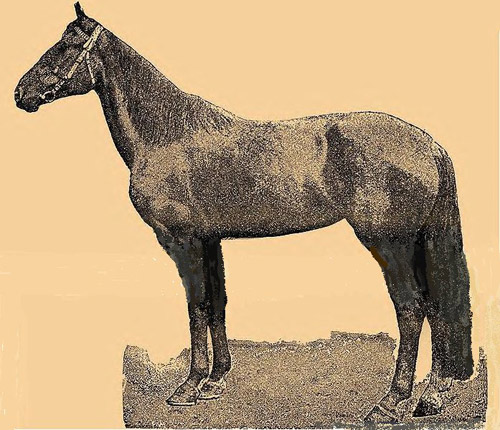
Intro
Also called Kalmykskaya and Kalmyk, the Astrakhan is a member of the Mongolian equine group, and bred in the territory along the Volga & Ural rivers. This breed is in danger of becoming extinct.
Origins
The Kalmyk breed came to Russia from Dzungaria in the 17th century by the Kalmyk people and were described as plain, medium-sized animals that were very tough and possessed speedy gaits. They look similar to the Kirgiz horse but tend to be coarser with longer legs.
Selective breeding of these animals ended around 1943, and many cross breeds have changed the landscape of the bloodlines considerably.
In 1986 the local University of Cattle Breeding attempted to determine their numbers and located an isolated heard in the eastern regions that seemed to be of purer blood. Of around 2000 animals, only about 500 were considered suitable to develop a breeding farm in an attempt to preserve the breed.
Features
Average height 14.2 – 15 hands
Can be pacers
Can be pacers
Physique
Firm constitution
Strong, sound feet
Strong, sound feet
Temperament
These animals are slow to mature, taking 6 years to reach full development.
Use
Riding
Transportation
Transportation
Video
Assateague – Chincoteague Pony

Intro
Assateague and Chincoteague ponies are essentially the same animals, they inhabit the island of Assateague off the coast of the Maryland – Virginia border.
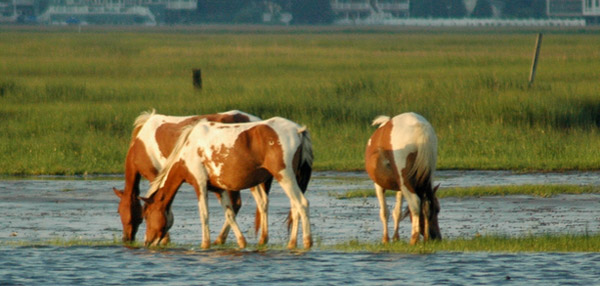
Origins
There are several theories as to the origins of these animals, however their existance on the island has been documented back to around 1631.
In 1639 horses were imported to the colony, which was encouraged by local government until the sheer numbers became a burden on the local habitat. In 1669 horses were taxed by the local government and owners were required to pen them during late summer and early fall.
It was this taxation which created the Assateague – Chincoteague ponies. Planters began to take their horses to nearby islands to avoid the cost of taxes and fencing.
By 1671 importation of horses to the local area was forbidden by law for three years and the unwanted horses were turned loose to live in the island marshes. Often domesticated animals were branded and turned loose with the herd to graze.
The herd on the Maryland side is managed by the National Park Service and the herd on the Virginia side is owned by the Chincoteague Volunteer Fire Company and permitted to graze on Chincoteague National Wildlife Refuge.
Every year during the last week of July the ponies are rounded up for their famous swim to Chincoteague for the Pony Penning Carnival. During this week young, strong animals are auctioned off with proceeds going back to care of the herd. The remaining ponies are returned to Assateague. This practice keeps the pony numbers down and increases quality of life for the herd.
Through the years, storms and natural events have threatened this breed of pony, so today’s ponies have been influenced by the blood of other animals
Features
Average height 12 – 14 hands in the wild, when domesticated they can grow up to 16 hands
Independent and hardy through natural selection
Legs are slim, strong with good joints and hard feet
Independent and hardy through natural selection
Legs are slim, strong with good joints and hard feet
Physique
Head is small and refined with widely spaced eyes
Much of their diet is salt-rich marsh grass, because of this they drink twice the water of normal animals. This can cause them to look rather bloated.
Much of their diet is salt-rich marsh grass, because of this they drink twice the water of normal animals. This can cause them to look rather bloated.
Traditional Colors
Temperament
Independent and hardy
Friendly when domesticated
Friendly when domesticated
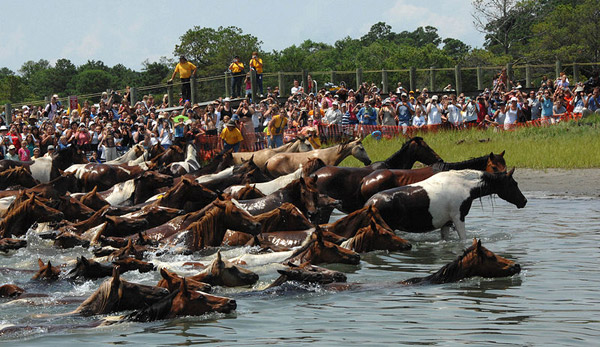
Use
Riding pony
Pleasure mount
Show pony
Light farm work
Pleasure mount
Show pony
Light farm work
Helpful Links
*All links open in a new window
National Chincoteague Pony Association
Chincoteague Pony Penning
Chincoteague Pony Centre
Annual Fireman’s Carnival Pony Swim & Auction
Chincoteague Pony
Misty’s Heaven
National Park Service
Chincoteague National Wildlife Refuge
Chincoteague Volunteer Fire Company
Horse Crazy Girls
National Chincoteague Pony Association
Chincoteague Pony Penning
Chincoteague Pony Centre
Annual Fireman’s Carnival Pony Swim & Auction
Chincoteague Pony
Misty’s Heaven
National Park Service
Chincoteague National Wildlife Refuge
Chincoteague Volunteer Fire Company
Horse Crazy Girls
Where to Buy
Assateague Island Pony Auction
1000 Welcomes Farm
Chincoteague Pony Farm
Rolling Bay Farm
Chincoteague Pony
1000 Welcomes Farm
Chincoteague Pony Farm
Rolling Bay Farm
Chincoteague Pony
Video
Asil
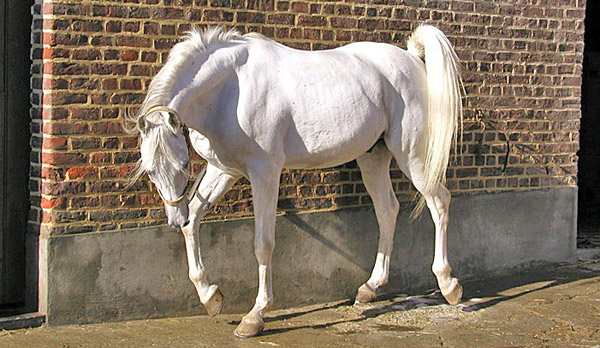
Intro
Named for the region where it is bred in Khuzestan, the bloodlines of the Asil horse are kept within local tribes and families.
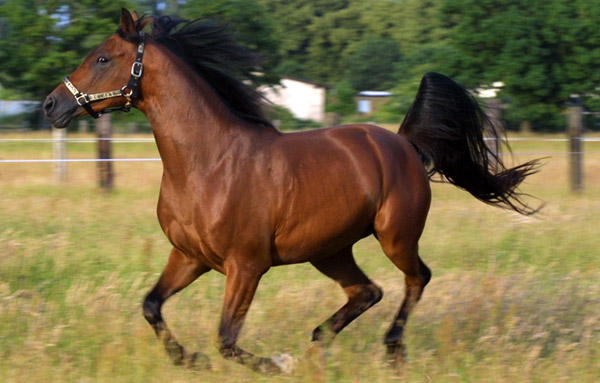
Origins
The actual origins of this horse seems to have several theories and from what I read, many of the western interpretations of their history are lost in translation. However rock carvings have been found in the area that date back 5,000 years.
Breeding of these animals was thought to bring spiritual & material gain to those who kept them. Interestingly enough mares were prized over stallions, because during night raids they were less likely to make noise upon smelling other animals.
Like many different types of Arabian breeds, strains were developed by different families and breeders.
Features
Average height 14.3 hands
Build for speed & stamina they are quick, efficient animals
Build for speed & stamina they are quick, efficient animals
Physique
Short, dished and refined head with small muzzle
Large, expressive eyes
Short curved ears
Short, strong back
Strong, clean legs
Large, expressive eyes
Short curved ears
Short, strong back
Strong, clean legs
Traditional Colors
Temperament
Spirited
Intelligent
Bold
Intelligent
Bold
Use
Racing
Transportation
Pleasure
Transportation
Pleasure
Helpful Links
*All links open in a new window
Introducing the Asil Horse of Khuzestan
Introducing the Asil Horse of Khuzestan
Asil Studs
Video
Przewalski’s Horse
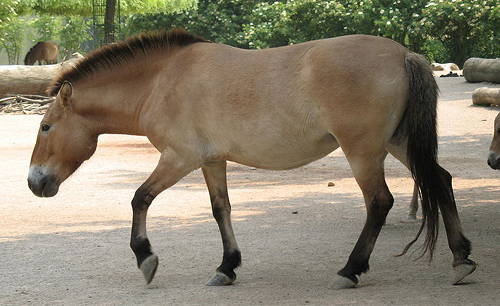
Intro
Also called Equus Przewalskii, Asiatic Wild horse, Mongolian Wild Horse and Taki, the Przewalski’s Horse is the only known surviving species of wild equine on the planet since the extinction of the Tarpan. All other breeds of equine on the planet come from domesticated horse (yes, even the wild ones – at some point they were reintroduced to the wild.
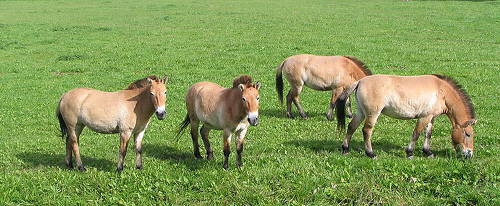
Origins
There is controversy surrounding the origins of this breed, some think they are the ancestors to modern domestic horse, but others disagree. The Przewalski carries 66 chromosomes & domestic horse carries 64, their offspring fertile & carries 65 chromosomes which may indicate that they are a different species altogether.
These animals were first discovered early in the 15th century by a Bavarian who was traded east until he wound up with the Mongols. They were recorded again in the 18th century by a Scottish doctor sent to China. However the men responsible for their interesting name & their official discovery was a Russian explorer named Colonel Przewalski.
Sadly until very recently the Przewalski’s Horse was extinct in the wild, hunted into oblivion, but in 1992 several breeding groups combined their herds and released them in Mongolia. Initially they were penned in and guarded against predators with the intention of releasing them in a few years time.
Features
Average height 12 – 14 hands
Physique
Head is large & heavy with a straight profile
Eyes are large & heavy
Eyes are small
Neck is broad & short with a short, upright mane
Back is straight & long
Chest is deep
Shoulder is straight & short
Legs are short & sturdy
Hooves are narrow & elongated
Tail has a tuft at the end
Eyes are large & heavy
Eyes are small
Neck is broad & short with a short, upright mane
Back is straight & long
Chest is deep
Shoulder is straight & short
Legs are short & sturdy
Hooves are narrow & elongated
Tail has a tuft at the end
Traditional Colors
Dun with primitive markings
Temperament
Spirited & for the most part ‘untamable’ (similar to zebras)
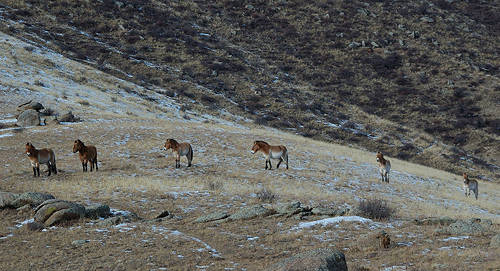
Helpful Links
* all links open in a new window
Foundation for the Preservation & Protection of the Przewalski Horse
National Geographic: Przewalski’s Horse
World Wildlife Federation Adopt a Przewalski Horse program
Foundation for the Preservation & Protection of the Przewalski Horse
National Geographic: Przewalski’s Horse
World Wildlife Federation Adopt a Przewalski Horse program
Video
Arravani
Intro
The Arravani is a Greek horse that is in danger of extinction and only about 200-300 of them are left in the world today.
Origins
This breed has been influenced by Egyptian Arabians, Medern, Greek Thessaliern, Roman horses and Turkish Arabian bloodlines. This combination created an animal that was comfortable to ride and personable.
For thousands of years they were used as agriculture workers by local farmers and for transporting loads over stony mountain paths.
The introduction of motorized vehicles saw a decline in their use that much of the stock was sold off as meat to Italian suppliers.
Features
Average height 12.3 – 14.6 hands
Physique
Small, finely cut head with large eyes
Highly set, strong neck
Straight lines and short back
Hooves are hard and small
Highly set, strong neck
Straight lines and short back
Hooves are hard and small
Traditional Colors
Temperament
Calm nature
Durable & persistent
Durable & persistent
Use
Racing
Agriculture
Pleasure horse
Agriculture
Pleasure horse
Ariègeois
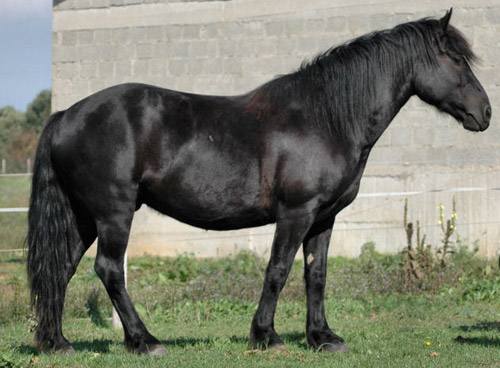
Intro
Also known as the Merens pony, the Ariègeois pony is a rare mountain pony native to Pyrenees and Ariègeois mountains of Northern Spain and Southern France.

Origins
Thought to be of prehistoric ancestory, these ponies were originally domesticated for use in mines and hauling timber.
Physically they are very similar to Dales pony and the Friesian horse and it is believed that during the Muslim invasion local stock was enhanced by Arabian blood.
Through dilution of the bloodlines with local draft animals, the pure-bred specimen are rare and may only be found in the high valleys near Andorra. However their signature black coat continues to bear their mark in the cross-breeds.
The Ariègeois breeders generally raise their animals by allowing them to graze freely in herds as nature intended. This lends to their strength and character.
Features
Average height 13 – 14.3 hands
Strong constitution and able to thrive in poor conditions
Built to handle severe weather
Surefooted on mountainous terrain
Strong constitution and able to thrive in poor conditions
Built to handle severe weather
Surefooted on mountainous terrain
Physique
Small, refined head
Short, strong neck
Long back and rounded hindquarters
Feet are strong and sound
Thick mane and tail
Short, strong neck
Long back and rounded hindquarters
Feet are strong and sound
Thick mane and tail
Traditional Colors
Pure black
White markings are unusual
White markings are unusual
Temperament
Surefooted and true, a willing and able mount
An independent and stubborn spirit but responds well to training
An independent and stubborn spirit but responds well to training
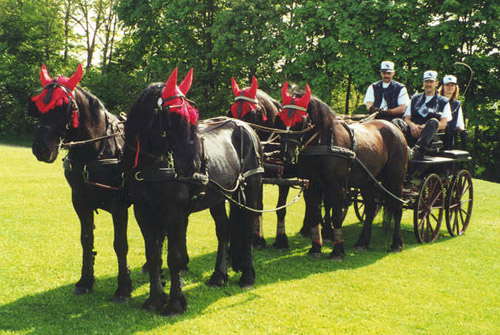
Use
Trekking in mountainous areas
Riding horse
Agriculture work
Riding horse
Agriculture work
Video
Asturcón

Intro
A breed from the Northwest of Spain, the Asturcón (or Asturian pony) has a natural ambling gait by which they alternate moving both legs on one side. A smooth ride, they became popular as ladies mounts in England and France and were later referred to as hobby horses.
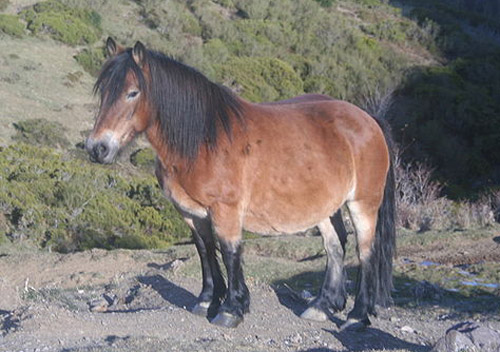
Origins
Thought to be a cross of the Garrano ponies of northern Portugal and Spain (which is a direct descendent of the Celtic pony) and the Sorraia of Iberia.
Neither of these bloodlines produce the ambling gait, so it is thought that perhaps some of the Celtic ponies (which are similar to Icelandic ponies) were amblers and their blood is present in the Asturcón breed.
This breed has faced extinction, due to harsh geographical conditions in their feral habitat. Although their slim numbers created an interest in preserving their bloodlines, the breed is nearly extinct in its pure form.
Features
Average height 11.2 – 12.2 hands
Physique
Small but heavy head with straight profile
Neck is long and thin with flowing mane
Back is straight and long
Feet are well-shaped and tough
Neck is long and thin with flowing mane
Back is straight and long
Feet are well-shaped and tough
Traditional Colors
Usually black (and sometimes bay) with no white markings
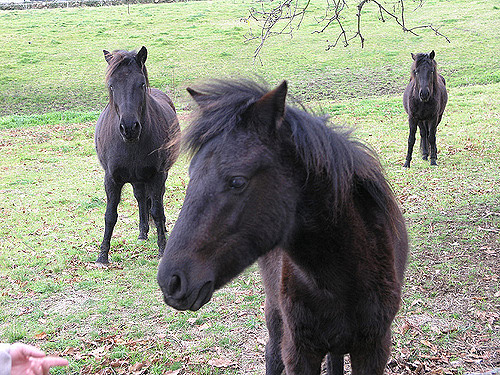
Helpful Links
*All links open in a new window
Oklahoma State
Horse Show Central
Oklahoma State
Horse Show Central

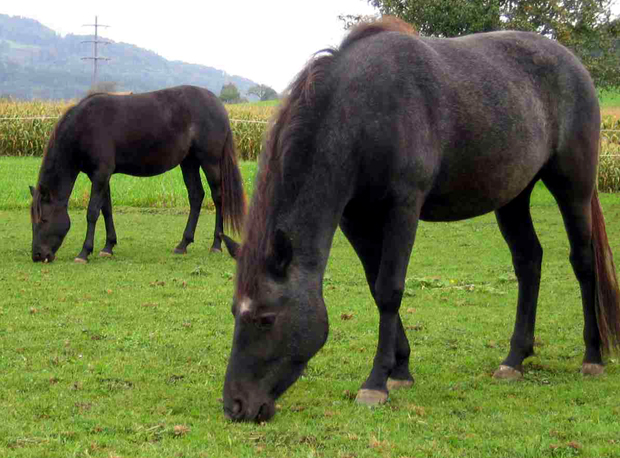
No comments:
Post a Comment